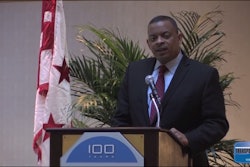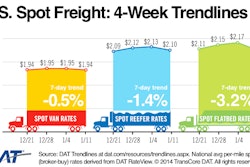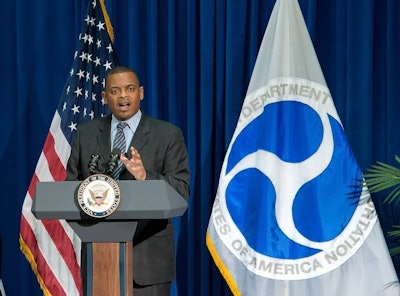
Transportation Secretary Anthony Foxx preached to the choir Wednesday, telling a gathering of transportation policy experts that the U.S. is falling behind in infrastructure investment and that the solution is to spend more, and spend wisely, on the nation’s roads and bridges.
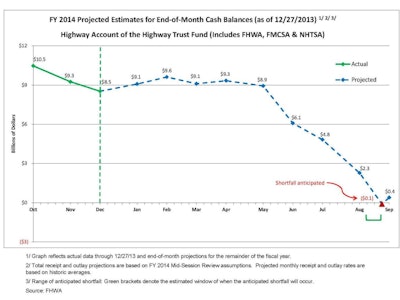 Based on current spending and revenue trends, the U.S. Department of Transportation estimates that the Highway Account of the Highway Trust Fund will encounter a shortfall before the end of fiscal year 2014. (Click to enlarge)
Based on current spending and revenue trends, the U.S. Department of Transportation estimates that the Highway Account of the Highway Trust Fund will encounter a shortfall before the end of fiscal year 2014. (Click to enlarge)In a speech before the Transportation Research Board’s Annual Meeting in Washington, Foxx touched on the numbers: A third of all major roads are in poor or mediocre condition, with more than 100,000 bridges “old enough for Medicare” and Americans spend a combined 600,000 years stuck in traffic each year.
In short, the nation faces a growing “infrastructure deficit.”
“It’s been ten years since we had a six-year surface reauthorization bill. To the extent that we’ve been able to address funding, it has been short-term and, from the perspective of state and local governments, too unpredictable to make long-range plans or long-term investments,” Foxx said. “So they’ve waited. And as they’ve waited to repair roads, and bridges, and transit projects, the price tag on those projects has gotten bigger. Because what’s true in business is true for infrastructure: Time is money. … And we’re kicking those higher costs to our kids and our grandkids.”
Therefore, Congress needs to understand the importance of funding infrastructure “now,” Foxx explained, noting the looming expiration of MAP-21, the current federal surface transportation funding plan.
RELATED: Governors, mayors, industry push for long-term transport plan
For starters, DOT will post a monthly update “ticker” on the balance remaining in the dwindling Highway Trust Fund. As for alternative funding sources, he highlighted President Obama’s plan, announced last summer, to fund transportation with the proceeds from corporate tax reform, along with recent proposals being floated in Congress to increase the motor fuels tax and rework the user-pay system.
Foxx also touted the Department’s Every Day Counts initiative and other cost-saving best practices as examples of how transportation dollars could be spent more effectively, citing a study from McKinsey & Company that found nations can “obtain the same amount of infrastructure for 40 percent less” just by adopting best practices.
Foxx cited examples of innovative project delivery in Utah, the use of “warm mix asphalt” and even the DOT initiative to cut down on paperwork in trucking.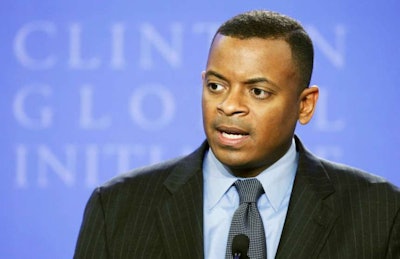
Finally, Foxx emphasized the importance of developing a “national vision” for the transportation system.
“Highway people like highways. Transit people like transit. Rail people like rail. But our transportation system should be greater than the sum of its parts,” he said. “We need a plan that takes our roads and rails and ports – and links them – and remakes the finest system of transportation the world has ever known into its 21st-century incarnation.”
Foxx also discussed his vision for multimodal transportation providing greater economic “ladders of opportunity” to all Americans and reiterated the Department’s commitment to safety.


